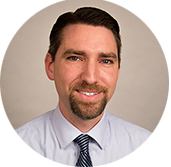STRONG-HF Analysis Quantifies Gains From Rapid Uptake of GDMT
Telling patients how many extra days they’ll be free from an event can help with shared decision-making, experts say.

After a hospitalization for acute heart failure (HF), rapid uptitration of guideline-directed medical therapy (GDMT) as performed in the STRONG-HF trial is expected to provide 8.7 extra days free from death or readmission due to HF over the next 6 months, according to a new analysis.
Restricted mean survival time (RMST)—the period without an event over a specific time span—was 166.3 days among patients randomized to high-intensity care in the trial and 157.6 days in the usual-care arm, Ashok Krishnaswami, MD (Kaiser Permanente San Jose Medical Center, CA), and colleagues report in a research letter published in the May 2025 issue of JACC: Heart Failure.
That difference, they say, is consistent with prior analyses looking at trials of individual HF medications.
Often when talking with patients, clinicians will discuss absolute or relative risks and numbers need to treat regarding the impact of medical therapy, Krishnaswami told TCTMD. “Those basically address: does [the therapy] work?” he said.
RMST, on the other hand, is a translational statistic that helps improve patients’ understanding of what they stand to gain from treatment, he indicated. “Trials should be reporting this as a routine measure of what they found.”
Stephen Greene, MD (Duke Clinical Research Institute, Durham, NC), who was not involved in the study, said RMST is “just another way to convey to patients the benefits of GDMT. We oftentimes talk about hazard ratios and absolute risk reduction, but to the average patient sitting in front of you in the clinic, they don’t necessarily see the intuitive benefit of those statistics. But when you tell them that this is the number of days or years of life expectancy that you might get from a therapy, that usually sits well with patients and they kind of clearly see the benefit.”
STRONG-HF Post Hoc Analysis
For the post hoc analysis, Krishnaswami et al calculated the RMST differences between the high-intensity and usual-care arms of STRONG-HF. The main findings showed that rapid uptitration of GDMT for HF within just 2 weeks improved clinical outcomes, measures of congestion, and quality of life among patients hospitalized for acute heart failure. At the time, GDMT consisted of three classes of medications—renin-angiotensin-system inhibitors, beta-blockers, and mineralocorticoid receptor antagonists—because sodium-glucose cotransporter 2 (SGLT2) inhibitors either were not approved in heart failure or were not widely used yet.
The primary outcome was a composite of all-cause mortality or HF readmission within 6 months. The difference in RMST favoring high-intensity treatment for that outcome was driven by a significant increase of 6.1 days free from HF readmission compared with usual care (P = 0.001). The difference in all-cause mortality—3.5 days—was not statistically significant (P = 0.07).
The benefits of rapid uptitration were enhanced in patients who achieved a higher average percentage of the optimal medication doses, with an RMST difference of 10.5 days (P = 0.003) for those taking at least 90% of the optimal doses.
RMST “can potentially bridge the knowledge gap between clinical trial results and bedside decision-making with patients and family,” Krishnaswami et al write.
When people are on GDMT for years and years, the benefits in terms of event-free survival are just going to accrue. Stephen Greene
Greene underscored that the 8.7 extra days free from a primary outcome event associated with high-intensity care in STRONG-HF came over just 6 months of follow-up, noting that the separation between trial arms was continuing to grow over time. “When people are on GDMT for years and years, the benefits in terms of event-free survival are just going to accrue,” he added.
In addition, if there had been greater use of angiotensin receptor-neprilysin inhibitors (ARNIs) and any use of SGLT2 inhibitors, the benefits of rapid uptitration likely would have been even more pronounced, Greene said. “STRONG-HF was a conservative estimate on what we’re going to get if we use comprehensive, disease-modifying, quadruple medical therapy.”
The trial also confirms “that we can indeed do more than one thing at the same time when it comes to GDMT,” he said. “You can make more than one medication change at the same time. And you have reassuring safety and major clinical benefits. I think that philosophy is what we need to understand if we’re ever going to crack clinical inertia.
“Because if we just do the one move at a time—the slow-and-steady approach—in real-world practice,” he continued, “we’re never going to get patients on optimal GDMT and then we’re going to continue having deaths and hospitalizations that could have been prevented had we been more aggressive with more than one move at the same time with GDMT.”
Todd Neale is the Associate News Editor for TCTMD and a Senior Medical Journalist. He got his start in journalism at …
Read Full BioSources
Krishnaswami A, Davison BA, Edwards C, et al. Effect of uptitration of recommended heart failure medications on restricted mean survival time in STRONG-HF. J Am Coll Cardiol HF. 2025;13:873-876.
Disclosures
- Funding for the STRONG-HF study was through an unrestricted grant provided to the Heart Initiative by Roche Diagnostics International (Rotkreuz, Switzerland).
- Krishnaswami reports no relevant conflicts of interest.





Comments